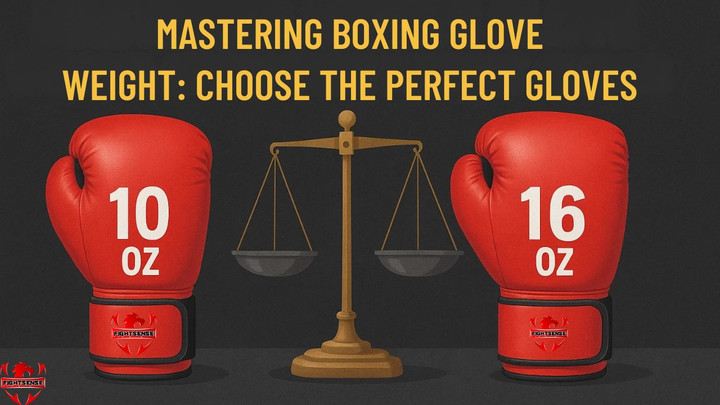Mastering Boxing Glove Weight: Choose the Perfect Gloves
19th May 2025
Correct boxing glove weight will increase performance and aid to guarantee safety while training. Knowing the variations in glove weight will help you to work purposefully irrespective of your degree of experience. From the regular boxing glove weight to heavyweight boxing glove sizes, this guide covers all you need to choose gloves that meet your aims.
Key Highlights
- From eight to twenty ounces, boxing gloves serve varied training uses
- Usually weighing 10 to 12 ounces, this is perfect for general training and bag work.
- Greater protection comes from larger gloves—14 ounces to 20 ounces—made for sparring and heavyweight fighters.
- Training goals: speed, endurance, or power determines the weight of gloves.
- Correct glove weight lowers wearer and partner injury risk.
Understanding Boxing Glove Weights
There are many boxing glove weight available, each designed for particular training purposes::
- 8 oz – 10 oz: Professional boxers use 8 ounces to 10 ounces; smaller gloves give faster hits but less protection.
- 12 oz: Standard for basic instruction covering bag practice and pad sessions is twelve ounces.
- 14 oz – 16 oz: Ideal for sparring; 14 to 16 ounces balance performance with protection.
- 18 oz – 20 oz: Heavy boxers or those looking for optimum protection during demanding training sessions utilise eighteen to twenty ounces.
Your body weight, kind of training you do, and personal comfort level will all affect the selection of the appropriate boxing glove weight.
Regular Boxing Glove Weight: The Standard Choice
For most training situations,regular boxing glove weights—10 ounces to 12 ounces—are indicated generally.They provide speed and agility and provide appropriate padding for protection.These flexible gloves fit mitt drills, bag training, and moderate sparring.
Heavyweight Boxing Glove Size: Enhanced Protection
Designed for bigger boxers or those experiencing intensive sparring sessions, heavyweight boxing gloves sizes from 14 to 20 ounces. Extra weight's more padding lowers the chance of injury in high-impact training.Protection generally pays off even if it may significantly slow down punching speed in terms of trade-off.
Aligning Glove Weight with Training Goals
Your training objectives should guide your choice of boxing glove weight:
- Speed Training: Eight ounces to ten ounces light gloves will boost hand speed and accuracy.
- Endurance Building: Over long sessions, medium-weight gloves—12 ounces to 14 ounces—help to boost endurance.
- Power Development: Heavier gloves (16 ounces to 20 ounces) aid to develop striking force by raising resistance.
Changing glove weight reduces injury risk and guarantees balanced development by matching training emphasis.
Safety Considerations in Glove Selection
Selecting the right boxing glove weight concentrates safety above performance:
- Hand and Wrist Protection: One should use hand and wrist protection. Enough cushioning stops impact-related harm.
- Sparring Safety: Good gloves serve to lower the possibility of injuring sparring partners.
- Compliance with Regulations: Check if gloves weight corresponds with training and competition rules.
Make sure gloves satisfy safety criteria always by asking teachers or trainers.
Get Yours Now!
Conclusion
Understanding boxing glove weight determines how confident one can be of safety and training. Most training sessions demand regular boxing glove weights; heavyweight glove sizes provide more protection for demanding workouts. Matching gloves weight to your body type and training aims improves performance and reduces injury risk.
Disclaimer
This blog serves just for educational needs. See a good trainer or coach to always choose the suitable boxing gloves.
FAQs
1. From which boxing glove weight should beginning boxers use?
Novices mix protection with manoeuvrability starting with 12 ounces gloves.
2. Can I wear the same gloves to every training session?
Although practical, it is advisable—for best performance and safety—to employ varied glove weights according to specific training forms.
3. Does using thicker gloves change the punching force?
Though they don't always make hits more strong immediately, larger gloves help to build strength over time and potentially slow down punching speed.
4. Are there contest specific glove weights?
Glove weights are indeed occasionally under control in contests; always refer to the particular regulations of the event.
5. How can I choose the right hand glove size?
To get the best fit, measure your hand circumference; then, refer to sizing guidelines supplied by glove makers.

